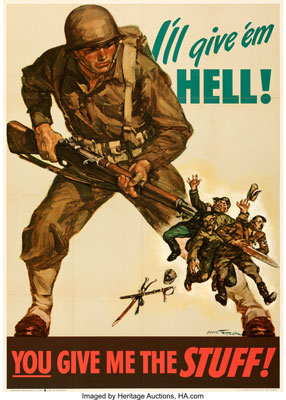You don’t have to look very far to see the fabric of society being irreparably torn apart. As these apparent bridgeless gaps appear, they represent the boundaries that define an ever-fragmented world. “Divide to conquer” seems to be the underlying current that is driving humanity to the brink of self-destruction. With all the advancements in technology and social examination, our basic understanding of the root issues that guide and drive us all has become lost in the haze of confusion and conflict.
The Roots of War?
At the heart of all conflict is a conflict rooted in the heart of the combatants. The Letter from James puts it this way:
Where do wars and fights come from among you? Do they not come from your desires for pleasure that war in your members? You lust and do not have. You murder and covet and cannot obtain. You fight and war. Yet you do not have because you do not ask. You ask and do not receive, because you ask amiss, that you may spend it on your pleasures.
James 4:1-3
Solomon warned, “By pride comes nothing but strife, But with the well-advised is wisdom.” 1 Simply put, PRIDE allows simple cracks to become serious chasms. Rather than centering our human relationships around the love and forgiveness that comes from obeying God’s commandments, we listen to the contradictions in the world that are ultimately born of Satan.
The Dark Devices of Division
What we are all seeing today is the manipulation of the masses by inflammatory rhetoric that fuels the fears of the people. As the self-appointed elite maneuver behind the veil of “might is right,” they encourage division, which serves only the ones who love to stand above the rubble of ruined relationships.
During the era of medieval feudalism, the world was divided into small estates in which lived a ruling Lord and the subservient peasants. The ever-present sense of danger forced a reciprocal relationship between the Lord and the vassals, whereby the Lord would provide the land and the castle while the peasants provided the workforce and the soldiers. In the end, the peasant’s sweat and blood built and defended the estate to the sole benefit of the Lord. In like manner today, deception is the predominate tool used to control the frightened multitude.
Deception by Objectification
 The term objectification means; “treating people like tools or toys, as if they had no feelings, opinions, or rights of their own.”2 The Graduate School of Stanford Business published an article3 dealing with the topic of the “Power and the objectification of social targets.” The article states, “Objectification has been defined historically as a process of subjugation whereby people, like objects, are treated as means to an end. The authors hypothesized that objectification is a response to social power that involves approaching useful social targets regardless of the value of their other human qualities.”4 Throughout the sad history of mankind, objectification has been the means by which civilizations have justified war, slavery, and subjugation of the masses.
The term objectification means; “treating people like tools or toys, as if they had no feelings, opinions, or rights of their own.”2 The Graduate School of Stanford Business published an article3 dealing with the topic of the “Power and the objectification of social targets.” The article states, “Objectification has been defined historically as a process of subjugation whereby people, like objects, are treated as means to an end. The authors hypothesized that objectification is a response to social power that involves approaching useful social targets regardless of the value of their other human qualities.”4 Throughout the sad history of mankind, objectification has been the means by which civilizations have justified war, slavery, and subjugation of the masses.
Objectification by Characterization
 Objectification is a key tool in motivating combatants in a conflict to kill each other. Characterization of your enemy makes killing them easier when all you are doing is terminating an inanimate object of little or no value.
Objectification is a key tool in motivating combatants in a conflict to kill each other. Characterization of your enemy makes killing them easier when all you are doing is terminating an inanimate object of little or no value.
History has been marred with unforgettable genocide and war crimes. Among the most memorable acts of crime in the twentieth century were the Holocaust, which killed more than four million Jews in Europe, the crimes during the Kosovo war, and the killings in Rwanda — the list goes on and on.
This is simply accomplished by convincing the troops on your side that their enemy is a heartless and hostile force that must be neutralized at any cost. Pragmatically driven situational ethics becomes the guiding principle behind this key component in establishing their mindset into one that will allow the soldiers to block out any compassion for their enemy.
 Name-calling is not just child’s play on the school playground. It has always been a mainstream military strategy. In the American war for independence, the British called the rebel troops “Yankees”5 and the revolutionaries called the British troops “Limeys.”6 During the Second World War, the Allied soldiers called the Germans “Krauts”7 and the Japanese, “Japs.”8
Name-calling is not just child’s play on the school playground. It has always been a mainstream military strategy. In the American war for independence, the British called the rebel troops “Yankees”5 and the revolutionaries called the British troops “Limeys.”6 During the Second World War, the Allied soldiers called the Germans “Krauts”7 and the Japanese, “Japs.”8
When Jesus was giving His disciples an insider briefing of the end-times scenario, He told them that the signs of the end would be “nation shall rise against nation, and kingdom against kingdom: and there shall be famines, and pestilences, and earthquakes, in divers places.” 9 The term translated “nations” is from the Greek word “ethnos” from which we get our English word ethnic as “relating to large groups of people classed according to common racial, national, tribal, religious, linguistic, or cultural origin or background.”10 The term translated “kingdom” is from the Greek word “basileia” meaning “royal power, kingship, dominion, or rule”11, which, in summary, means Ideology. Therefore, the subdivision of the world in the end times will not necessarily be according to national borders but will be along the ethical and ideological division of all humanity.
Objectification by Villainization
Once the mindset of objectification by characterization has been established, it is an easy step toward the villainization of those you deem to be a threat to you. Therefore, these “things” are not only inanimate objects, but they present a clear and present danger that must be eliminated. Here, we see the power of propaganda that sets in motion the wheels of fear that drive hatred to its ultimate solution.
 In the dystopian novel “Nineteen Eighty-Four,”12 we are shown that “Big Brother” (the ruling elite) uses hate to control the people of Oceania. “The Two Minutes of Hate is a daily ritual in which Party Members express their hatred for enemies of the Party. It is important to show how the Party compels orthodoxy and cohesiveness among its members.”13 This all culminates in “Hate Week,” where the general public is whipped up into a mindless frenzy, which in turn enables the party elite to exercise their power over their fearful followers.
In the dystopian novel “Nineteen Eighty-Four,”12 we are shown that “Big Brother” (the ruling elite) uses hate to control the people of Oceania. “The Two Minutes of Hate is a daily ritual in which Party Members express their hatred for enemies of the Party. It is important to show how the Party compels orthodoxy and cohesiveness among its members.”13 This all culminates in “Hate Week,” where the general public is whipped up into a mindless frenzy, which in turn enables the party elite to exercise their power over their fearful followers.
Sadly, I believe we are seeing this type of polarizing hate being used by opposing ideologues who are using this powerful weapon to motivate their followers to silence and even crush their adversaries. In this type of caustic and combative environment, discussion and dialogue are discouraged, compromise is considered weakness, and tolerance is treated as treason. Along the way, truth gets trampled in the stampede of the mindless masses.

Building Bridges without Compromise
There currently exists a kind of fear about creating bridges to those who hold competing beliefs. In fact, some would see any attempt at reaching out to the other side as yielding to the temptation of tolerance. I believe the greatest response to that concern is addressed by the actions of Jesus.
Now it happened, as Jesus sat at the table in the house, that behold, many tax collectors and sinners came and sat down with Him and His disciples. And when the Pharisees saw it, they said to His disciples, “Why does your Teacher eat with tax collectors and sinners?” When Jesus heard that, He said to them, “Those who are well have no need of a physician, but those who are sick. “But go and learn what this means: ‘I desire mercy and not sacrifice.’ For I did not come to call the righteous, but sinners, to repentance.”
Matthew 9:10-13
STEP 1: Remember your Primary Calling.
The trouble with differences is they can lead to conflict that ends in destruction of any bridge-building attempt. As Christians, we are told to carry out the Great Commission. Jesus said to His disciples, “Go into all the world and preach the gospel to every creature.” 14 Our life’s object should be to make every effort to shine the Light of Jesus into every dark corner.
STEP 2: Face your adversary with the countenance of communion.
In the above passage from the Gospel of Matthew we see Jesus setting aside the prejudicial traditions of the pious elite so that He might reach out to the religiously marginalized. Jesus was making Himself vulnerable. He did not stoop to their level but sought a method of communication to lift them up into communion with Himself. He brought LIGHT into a room full of darkness.
STEP 3: Reflect Jesus.
Let the radiance of Holy-Spirit-enabled love illuminate your whole being. If FEAR is the binding force that is holding back communion, then LOVE is the power that can break those bonds, allowing the gap to be bridged. John’s first epistle says,
“There is no fear in love; but perfect love casts out fear, because fear involves torment. But he who fears has not been made perfect in love.”
1 John 4:18
STEP 4: Speak words of healing, not hate.
Seeking conversation without conflict can be difficult if you are standing on opposite sides of the GAP. According to the apostle Paul, to reach those who are lost, we all need speech lessons. To the Colossians he wrote,
“Walk in wisdom toward those who are outside, redeeming the time. Let your speech always be with grace, seasoned with salt, that you may know how you ought to answer each one.”
Colossians 4:5-6
May our conversations with the other side bring light, love, and liberty.
“Therefore strengthen the hands which hang down, and the feeble knees, and make straight paths for your feet, so that what is lame may not be dislocated, but rather be healed. Pursue peace with all people, and holiness, without which no one will see the Lord: looking carefully lest anyone fall short of the grace of God; lest any root of bitterness springing up cause trouble, and by this many become defiled;”
Hebrews 12:12-15
In the end, the best way to deal with darkness is to turn on the LIGHT. Therefore, Jesus said,
“You are the light of the world. A city that is set on a hill cannot be hidden. Nor do they light a lamp and put it under a basket, but on a lampstand, and it gives light to all who are in the house. Let your light so shine before men, that they may see your good works and glorify your Father in heaven.”
Matthew 5:14-16





